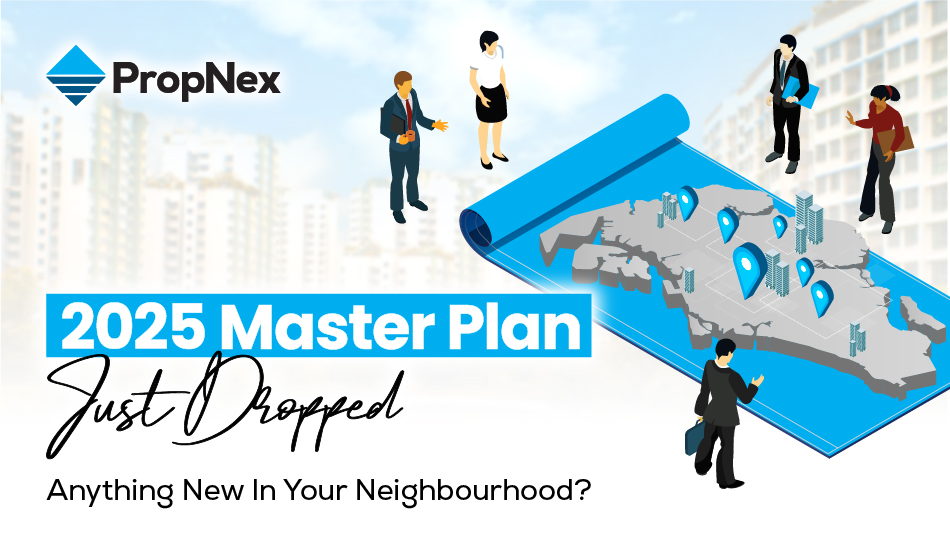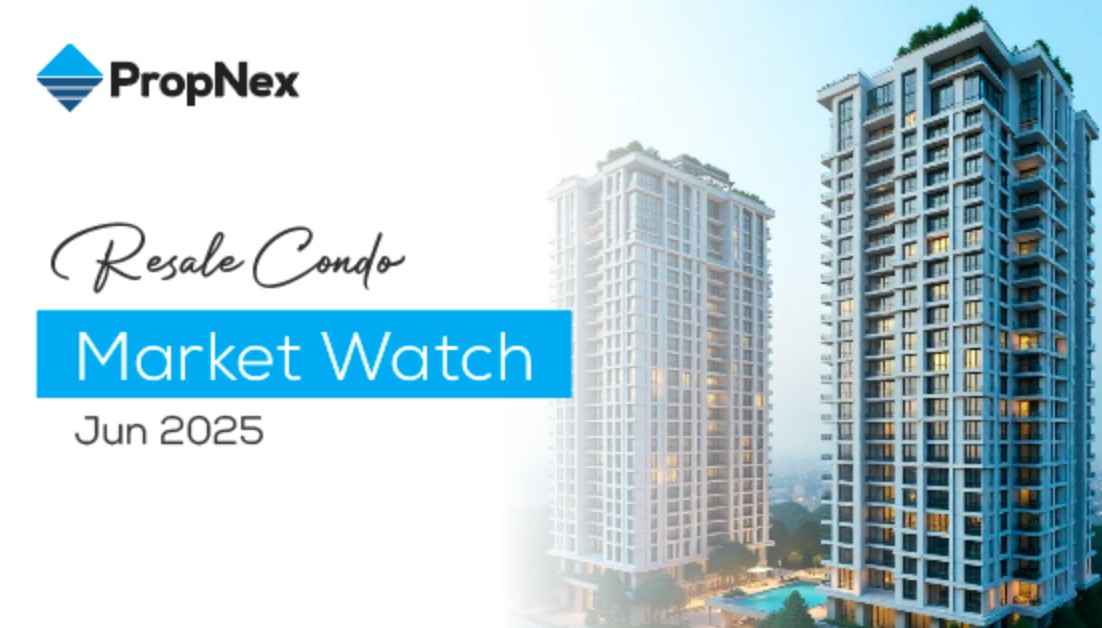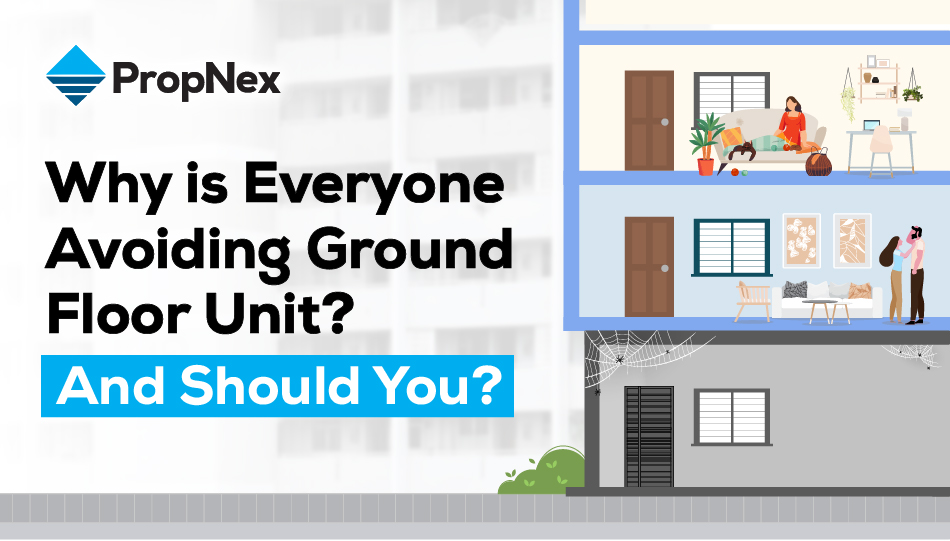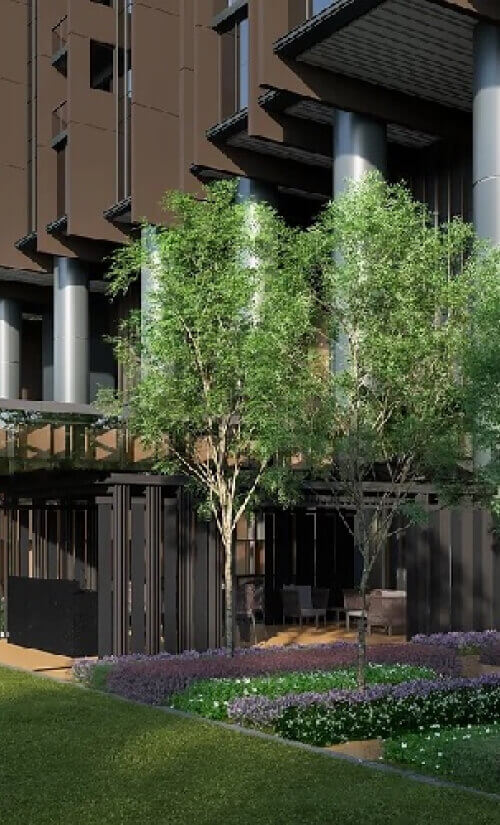PropNex Picks
|July 29,20252025 Master Plan Just Dropped - Anything New In Your Neighbourhood?
Share this article:

It's that time again. URA just updated the 2025 Draft Master Plan, which means we got a fresh idea on what's next for Singapore. So how does the government's plans for the future affect you as a homeowner or investor? Let's get right into it.
If you don't already know, the URA Master Plan is like a blueprint for upcoming developments in the next 10 to 15 years. It's how the government decides what land gets used for what: housing, parks, transport, commercial hubs, etc. It's reviewed every five years, and even though it's just a "draft" now, this is pretty much the sneak peek before it becomes official.
So if you're serious about buying property or holding long-term, this information is gold. It gives you clues to where the next hot spots, potential price jumps, or cooling zones might be. But since there's just so much to digest, I've picked out the major things you should know.
More homes including public housing are on the way and they won't be in the middle of nowhere. They will be built in new precincts close to amenities, job nodes, and transport nodes. These new developments will also be close to existing estates so families can live closer together. Overall, the idea is to make convenient city living more accessible to everyone.
Source: uradraftmasterplan.gov.sg
Here are the precincts:
- Tengah Town will expand further, with more homes planned just south of Brickland Road and a new MRT station along the north-south line.
- Mount Pleasant will welcome a new estate, MRT station, and amenities
- The former Singapore Racecourse at Kranji is being explored as a potential new estate with public housing in a riverine setting.
- Sembawang North is getting a new neighbourhood, complete with shops, dining spots, a community centre, and a park.
- Punggol Crescent along the Sungei Serangoon waterfront will not only offer new homes, but also commercial and recreational amenities.
- Kallang River is set to welcome new homes, especially in the upcoming Kampong Bugis, which is said to be a waterfront precinct.
- Marina South will become a mixed-use area, blending residential blocks with well-connected public spaces.
- Pearl's Hill is being reimagined as a car-lite district on the hillside. It will have a mix of new public and private housing.
- Former Keppel Golf Course site will get around 9,000 new homes, marking the start of the Greater Southern Waterfront's transformation.
- Dover Medway will offer more housing options in Greater one-north.
- Bidadari Estate is a new estate which will have approximately 10,000 households when it's fully completed. It will also have a cycling and pedestrian network connecting to Woodleigh and Bartley MRT stations.
- Chencharu is a new public housing estate featuring a century old colonial-era bungalow for community use. The two-storey building will be part of a heritage trail to promote its history.
With more homes coming into the market, property prices might start to ease, at least in the public housing segment. More supply generally means less competition, and that could moderate the resale HDB market even more. When that happens, it is also possible that the 15-month rule be lifted.
Another possible outcome is that private property in fringe areas might start to face stiffer competition. Think about it. If you can get a well-located BTO near upcoming transformations (job node, MRT, amenities), it may start to feel like the more rational choice, especially for younger couples or upgraders who aren't in a rush.
So while more homes are great news for buyers (especially first-timers), it could also mean a more competitive landscape for private developers.
You probably have heard of the Community Care Apartments (CCAs), which are flats that offer care services and community activities to support seniors who want to live independently. We've seen some of these launches since 2021 in places like Bukit Batok, Queenstown, Bedok, and Geylang. But now, the first private assisted-living apartments are coming to Parry Avenue. And they will feature a wellness clubhouse, geriatric care centre, and nursing home, on top of care and social programmes.
For older folks who are already comfortable staying at their current homes, the EASE (Enhancement for Active Seniors) programme can provide upgrades like grab bars to make homes safer and more accessible. Over 328,000 public housing apartments have tried it out and it's finally expanding to private homes.
By 2030, we will also have 10,600 more nursing home beds, and these won't be your typical clinical-style facilities. New homes are being thoughtfully designed to support not just physical needs, but also mental and emotional well-being. So there will be spaces for arts, music therapy, and social interaction.
On top of that, we'll also see more dementia-friendly neighbourhoods. Places like Kebun Baru, Yishun, and Yio Chu Kang offer supportive services, inclusive amenities, and improved navigatibility. This helps those with dementia stay independent and engaged in familiar surroundings. For example, the blue court in Yio Chu Kang doubles as both wayfinding landmarks and play spaces that promote cognitive activity.
Source: uradraftmasterplan.gov.sg
Personally, I think it's good that the government is taking action to accommodate the elderly, especially considering the rising life expectancy and low fertility rates. In fact, by 2030, one every four people will be in the 65 and above age group. So with more seniors choosing to age in place, it makes sense to introduce more assisted living options so they can remain independent and supported.
And while senior housing isn't an investable asset class yet, this might change in the future. It's clear that the government is already planning and designing to cater to the ageing community. Soon enough (though probably not in the near future), the value of senior housing models may increase.
If all goes according to plan, by the 2030s, 8 in 10 households will be within a 10-minute walk of an MRT station. Improved connectivity means shorter commutes for everyone, but especially for workers who need to travel daily. As first-and-last-mile improves, getting to the office and back will be faster and convenient.
But the opening of a new MRT station doesn't just cut travel time, it can also give surrounding property values a healthy boost, especially in areas that were previously not very accessible. So it's not a surprise that homebuyers pay premiums to have close proximity to MRT stations.
That's why it's important to pay attention to future developments, and so far, there are what we can look forward to:
?? North-South Line (NSL)
2034 | Brickland Station | Brickland station between Bukit Gombak and Choa Chu Kang |
By mid 2030s | Future station between existing stations | Sungei Kadut station between Yew Tee and Kranji |
?? East-West Line (EWL)
2025 | New Platforms at Tanah Merah | Opening of new platform at Tanah Merah and completion of the East Coast Integrated Depot |
?? Circle Line (CCL)
2026 | Stage 6 | HarbourFront - Marina Bay (3 stations) |
Future | Future stations between existing stations | Bukit Brown station between Caldecott and Botanic Gardens |
?? Downtown Line (DTL)
2026 | Stage 3 Extension | Expo - Sungei Bedok (2 stations) |
By 2040 | Stage 2 Extension | Sungei Kadut - Bukit Panjang |
?? Thomson-East Coast Line (TEL)
2026 | Stage 5 | Bayshore - Sungei Bedok (2 stations) |
2008, in tandem with Founders' Memorial | Founders' Memorial station | Founders' Memorial station between Gardens by the Bay and Tanjong Rhu |
In tandem with Mount Pleasant Housing Estate | Mount Pleasant station | Mount Pleasant station between Caldecott and Stevens |
In tandem with Marina South developments | Marina South station | Marina South station between Marina Bay and Gardens by the Bay |
By 2040 | Thomson-East Coast Line Extension | Sungei Bedok - Changi Airport Changi Airport - Tanah Merah (Conversion from EWL to TEL) |
Future | Future stations between existing stations | Station between Springleaf and Lentor |
On top of that, the Bus Connectivity Enhancement Programme launched in 2024 will continue to improve bus services by adding more trips, adjusting routes, and tailoring routes to serve new towns we mentioned earlier. There will also be "express feeder" services in estates that are further away from MRT stations as well as express services for peak hours.
There is also an upcoming multimodal transportation corridor spanning 21.5 kilometres, which will enhance connectivity from the north to the city. This will especially benefit towns like Sembawang, Yishun, Ang Mo Kio, Toa Payoh, Novena and Rochor. This corridor will divert more traffic to the elevated and underground. So, lanes and surface streets can be repurposed for walking, cycling, public transport and community spaces.
Source: uradraftmasterplan.gov.sg
I think being near an MRT station will probably always matter. But, as the entire island gets more connected over time, what counts as "convenient" may start to shift. It's not just about being close to a train anymore, but also about how easy it is to get there from your home. So places near walkways and cycling paths might quietly become more valuable in the future.
New business and employment hubs are being developed, and existing ones are being refreshed. This will provide a range of spaces to suit different business needs, alongside homes and amenities located near workplaces. Businesses can tap into new opportunities, adapt to changing demand, and continue generating quality jobs for the population.
Source: uradraftmasterplan.gov.sg
Here are some of the upcoming transformations to look out for:
- The Northern Gateway will see better cross-border links through the Johor Bahru-Singapore RTS Link and the redevelopment of Woodlands Checkpoint. Together with the Johor-Singapore Special Economic Zone, these developments will drive the growth of Woodlands Regional Centre into a key business hub with better access to regional markets.
- Bishan Sub-Regional Centre is set to become a new employment node, offering office spaces and more job opportunities, along with refreshed amenities for residents.
- Punggol Digital District will focus on jobs in key growth sectors, supported by lifestyle offerings like Punggol Coast Mall and green communal areas
- Tampines Regional Centre is undergoing rejuvenation with new homes, workspaces, and community facilities, designed to support evolving live-work trends and improve connectivity.
- The Eastern Gateway, anchored by Changi Airport and Changi Aviation Park, will reinforce Singapore's role in global trade. The upcoming Terminal 5 will strengthen the country's aviation status.
- The Paya Lebar Air Base will be relocated and gradually redeveloped into a mixed-use business and residential hub in the 2030s.
- Our Downtown remains strong as a financial and business district, while evolving into a mixed-use area for businesses, residents, and visitors.
- The Greater Southern Waterfront will become a cultural district stretching from Marina East to Pasir Panjang, offering housing commercial, cultural and recreational spaces.
- Sentosa and Pulau Brani will be transformed into a new leisure destination with new attractions.
- Tuas Port in Western Gateway, a major global shipping hub with advanced automation, will place key infrastructures by 2027 to further boost cargo efficiency.
- Jurong Lake District will be a vibrant, green mixed-use district with new offices, homes, and recreational spaces by the lake.
Naturally, all these changes will likely drive up the value and demand for commercial and industrial properties. But it can potentially affect the residential market as well. As more jobs pop up in outer regions, more workers would want to seek nearby homes to enjoy shorter commutes. So, we might see an increased demand for housing and rental in these areas that were previously considered too "ulu". In contrast, decentralising efforts like this can slow down the growth of RCR and CCR properties. And over time, this could tighten the price gap between regions even more than it already has.
That being said, the upcoming transformation in the Northern area is particularly worth watching. With the Johor-Singapore Special Economic Zone and RTS Link, we might see more housing and rental demand, not just from local workers, but also Malaysian workers.
When land is as scarce as it is here in Singapore, what lies beneath could be just as valuable as what's above. So by maximising the potential of underground space, we can free up surface land for residential, commercial, or recreational developments.
Many key infrastructures like rail lines, roads, and utility networks are already built underground, while shallower basements are being used for things like retail and car parks. But this is just the beginning. The government is set to continue exploring innovative underground uses to improve infrastructures. Plus, advancements in underground mapping and construction technology will help us build smarter and further optimise land use in the future. Who knows, maybe we'll have basement homes someday?
Public housing estates and town centres are the heart of Singapore. To keep these spaces vibrant and liveable, initiatives like Remaking Our Heartland (ROH), Neighbourhood Renewal Programme (NRP), and Home Improvement Programme (HIP) give these familiar places a new lease of life whilst still keeping the character and charm we grew up with. For example, Bedok Town Centre kept the distinct pedestrian malls when it was rejuvenated with new developments and amenities.
It's good that the government isn't just building new towns, but also putting effort into refreshing the old ones many of us grew up in. And in a small city like Singapore, gentrification is kind of inevitable.
Programmes like ROH, NRP, and HIP are quietly doing a lot to make sure older estates don't fall behind. From a real estate perspective, these upgrades might help older flats retain their value better over time, especially in mature estates where demand is already quite strong.
Ultimately, URA's plans tie back to their core vision for Singapore's future, one that balances progress with liveability. Every move supports the broader mission of Shaping a Happy, Healthy City; Enabling Sustainable Growth; Strengthening Urban Resilience; as well as Stewarding Nature and Heritage.
For homebuyers and investors, these changes directly shape where and how we live, work, and grow our assets. Whether it's new housing, better transport and connectivity, or revitalised neighbourhoods, these changes are setting the stage for stronger long-term value.
Views expressed in this article belong to the writer(s) and do not reflect PropNex's position. No part of this content may be reproduced, distributed, transmitted, displayed, published, or broadcast in any form or by any means without the prior written consent of PropNex.
For permission to use, reproduce, or distribute any content, please contact the Corporate Communications department. PropNex reserves the right to modify or update this disclaimer at any time without prior notice.








